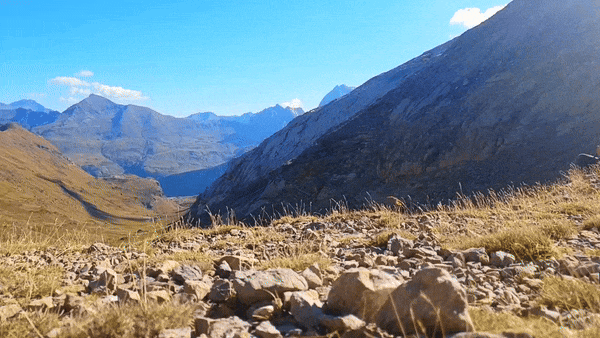Every autumn, a narrow pass in the Pyrenees mountain range between southern France and northeast Spain is flooded by a torrential stream of marmalade hoverflies, pollinators with citrus-colored bodies and black stripes. The hoverflies dodge the mountain's harsh headwinds by flying close to the ground, making the the sunlit flurries appear "almost like a river of like golden light," said Will Hawkes, an insect migration scientist at the Swiss Ornithological Institute. Flotillas of white and yellow butterflies soaring above the flies are more easily buffeted by the winds, swirling in the thousands through the pass. "It's like a blizzard almost, with all the whites and yellows," Hawkes said.
The marmalade hoverflies, butterflies, and other countless insects all migrate south for the winter, some stopping in the warmer climes of Spain and others potentially heading all the way to Sub-Saharan Africa. The Bujaruelo Pass, which sits at an altitude of nearly 7,500 feet and is just under 100 feet wide, offers the bugs a more hospitable doorway into Spain than the surrounding peaks. But it is not a resting place, bereft of plants for the flies to feed on and bitterly cold at night. So on the busiest migration days, the whirring hoverflies produce a buzzing noise—not the lackadaisically pitched buzzing of a wandering bee in a garden, but a sustained note. "They've got to get through, so it's a real determined hum," Hawkes said.
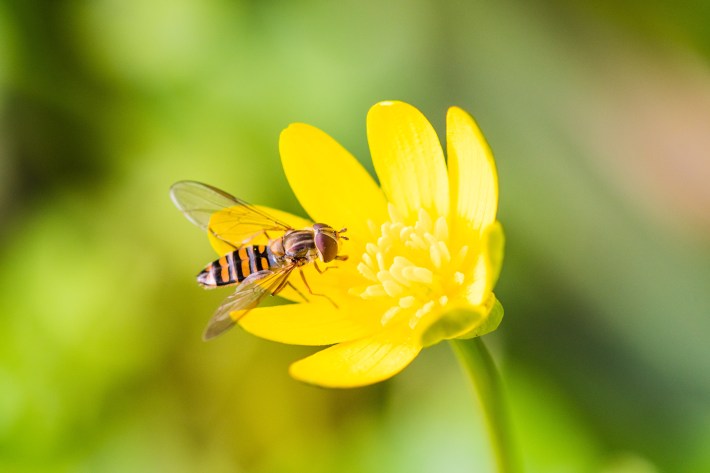
This spectacular insect migration was first recorded in 1950 by married ornithologists David and Elizabeth Lack, who had come to the pass on a honeymoon of sorts to observe how small birds crossed the craggy peaks of the Pyrenees, which can top 11,000 feet. Although few researchers visited the pass in the following years, nearly 70 years passed without any studies published on the migration. In 2018, a group of researchers including Hawkes decided to change that. Their survey of four years of fall migrations was published Wednesday in the journal Proceedings of the Royal Society B.
Hawkes had become fascinated with migrating insects when he researched one such migration through the Alps as a student. When his PhD supervisor Karl Wotton, another author on the paper, told him about the Lacks' paper in 2018, Hawkes jumped at the opportunity to do fieldwork in the pass that fall. The researchers wanted to do a systemic analysis of the migration to know how many and what kinds of insects were involved. For the large and slow butterflies, counting was somewhat straightforward. Every two hours during the day, Hawkes sat on a rock on one side of the pass and counted how many butterflies flew past him in 15 minutes—a rush of cabbage white butterflies Pieris rapae, and clouded yellow butterflies Colias croceus.
But it was impossible to count the vast majority of the migrating insects by sight alone. They arrived in hovering deluges, some just a few millimeters long. Some days, the researchers observed more than 3,000 flies per meter per minute. To count these insects, which all flew close to the ground to skirt the headwind, the researchers put a smartphone camera in a waterproof case and placed it facing a rock. All day, the phone took minute-long videos every 15 minutes.
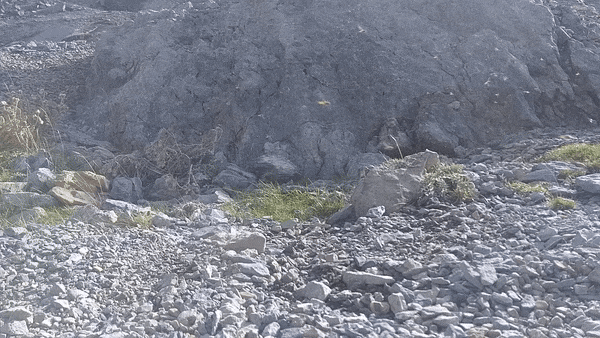
While the data collection was easy, the data extraction was a headache. The researchers attempted to design a computer software or AI model to pick out the insects from the background, but nothing worked, Hawkes said. "Eventually it was the most time-efficient thing for me to sit for like a month and count the number of flies individually as they moved through the frame," he said. "This was millions of flies." But even this footage had fun surprises, functioning like a camera trap to capture the various creatures inadvertently filmed by the camera: wandering stoats, inquisitive birds, and the occasional tourist peeing near the rock.
As the video footage was not clear enough for the researchers to actually identify the flies whizzing past, they set up a stationary net trap on the side of the pass. Migrating insects would fly into the net, become stuck, crawl up toward an opening and fall into a bottle of ethanol. This was the only way for the scientists to collect a representative sample of their diminutive specimens, which Hawkes would identify at night. "We recorded every single type of insect migrating through this mountain pass, which hadn't ever been done before," he said.
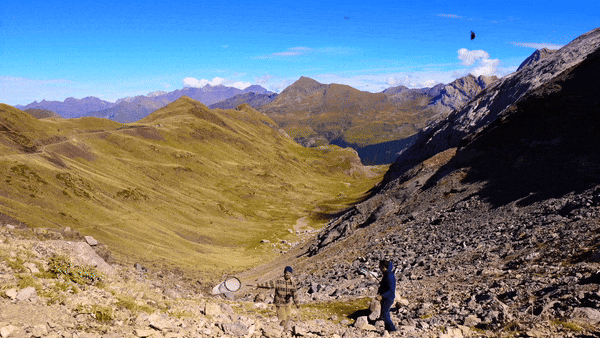
To estimate the sheer number of insects moving through the pass, the researchers would discern the ratio of insect groups caught in the traps. If 20 percent of the insects in the trap were hoverflies, they assumed 20 percent of the insects caught on camera were hoverflies. Overall, the researchers estimate that 17.1 million insects cross the Bujaruelo Pass each year, suggesting that billions of insects likely cross the Pyrenean mountain range each year.
Sometimes during the researchers' visits, the Bujaruelo Pass would appear to be empty. The air appeared clear, free of any tiny migrants. Still, when Hawkes swung his net over the edge of the pass, where the insects would be coming up, it filled up with miniscule flies. And while the hoverflies vanished after the sun set, they were replaced by squeaking death's-head hawkmoths flapping through the corridor, redolent with the smell of honey they stole from beehives. Observing this relentless, purposeful journey of millions of insects always makes Hawkes feel humbled. "You feel like you're observing something like way bigger and more important than yourself," he said.
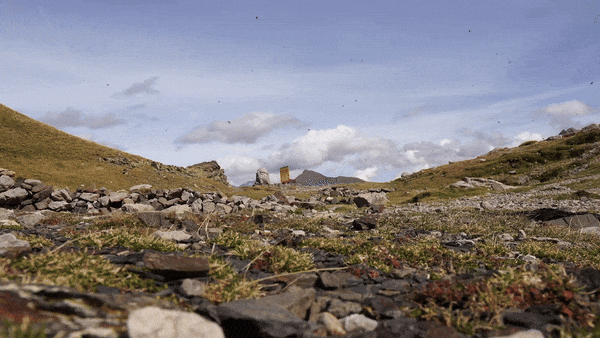
The researchers only included insect groups in their analysis if they were glimpsed more than 100 times. Some insects that didn't make the cut included bumblebees, painted lady butterflies, and hummingbird hawk-moths. At night, the researchers also observed turnip moths tailed by their nemeses, tiny parasitic wasps that are known to lay their eggs in the turnip moth caterpillars. Hawkes believes these sparser animals must still be migrants. "Otherwise why would they be up there?" he said.
Before Hawkes visited the pass in person, he expected butterflies and dragonflies would be the most abundant travelers, in part because the Lacks' paper estimated hundreds of butterflies passed through the pass each hour, accompanied by a dizzying stream of dragonflies. These showy insects also "steal their illustrious insect migration headlines," Hawkes joked. But they made up just 2 percent of the migration. But the standouts were clearly the flies, which comprised 90 percent of all the recorded fliers. "That was what was most exciting to me, because then it just opens up this other world," Hawkes said.
Most pollinator research is focused on bees, relegating other pollinating insects into the condescending group of "non-bee pollinators." But hoverflies are hugely abundant pollinators known to visit at least 72 percent of global food crops, according to a 2020 paper. The adults feed on nectar and pollen, which they can carry over extremely long distances during migration, even more than 62 miles across open water. Marmalade hoverflies hatch in late summer and begin to fly south when temperatures dip, flying with the winds and using the sun as a compass, Hawkes said. About 75 percent of the migrating marmalades are females, often carrying sperm to their eventual destination to lay their eggs, which will grow up to migrate back to the hoverflies' northern home over a series of generations. All together, these generations of humble hoverflies transport nutrients, pollen, and elements around the world. "If we didn't really think that flies migrate, then we have missed all their ecological impact on the planet," Hawkes said.
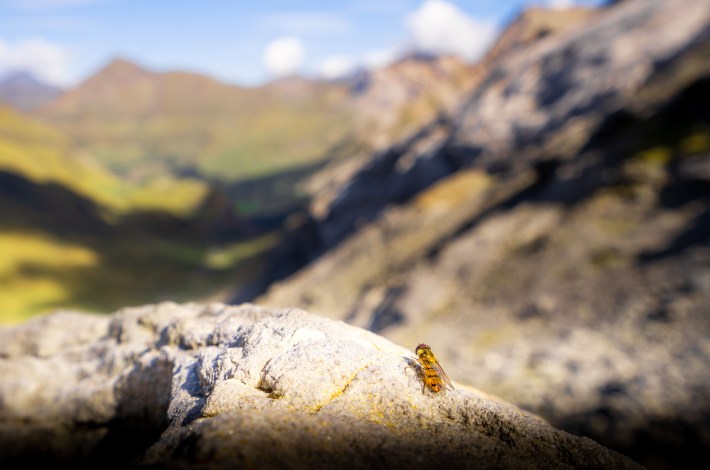
Although the researchers could not directly compare the numbers of insects in the pass to the historic numbers more superficially recorded by the Lacks, a study in the mountains of southwest Germany found populations of migrating aphid-eating hoverflies had dropped by an alarming 97 percent since 1970. "We can presume there's going to be a similar decline" in the Pyrenees, Hawkes said, adding that habitat loss, pesticide use, and climate change all threaten populations of hoverflies and other insects.
This outlook is far from ideal. But Hawkes hopes people will take an interest in these surprising, remarkable migrants and make the world more welcoming to their journey—planting wildflowers or pressuring local governments to protect the species. He pointed out that insects like marmalade hoverflies can lay thousands of eggs and reproduce all year round. "They could, if they get the chance, if we provide the habitat for them, have loads of children and then their numbers can ramp up again really quickly," he said. "They're very resilient. We just have to give them the chance to do that."
